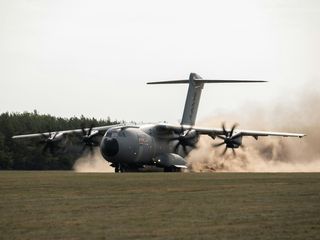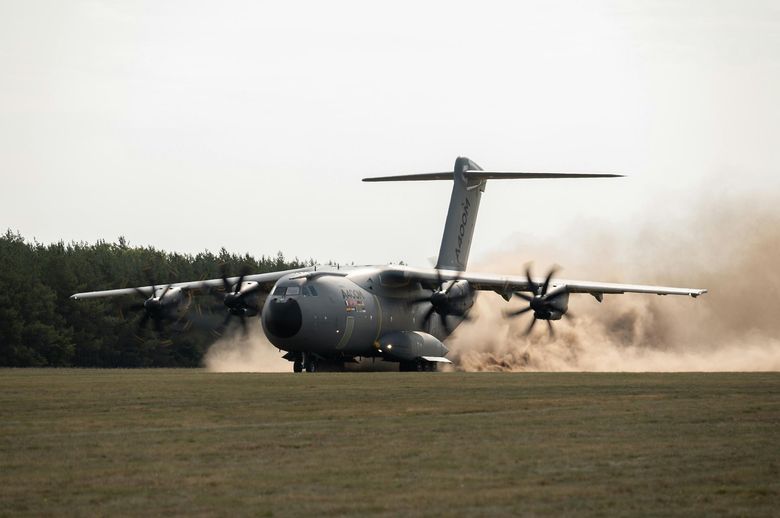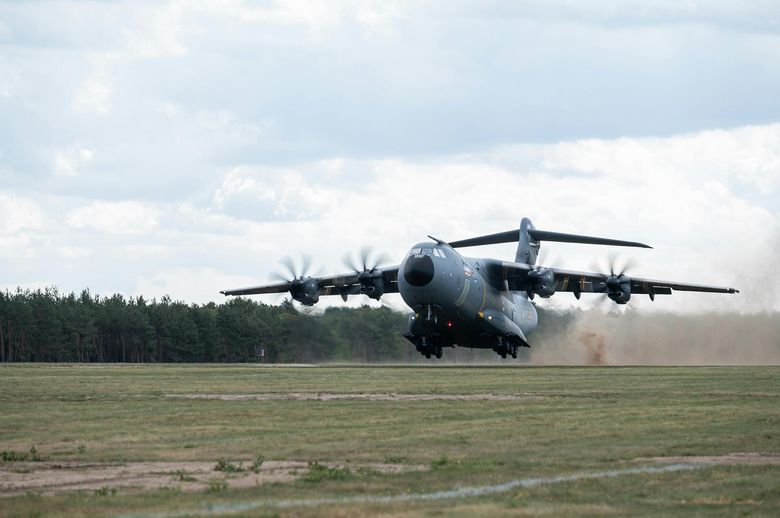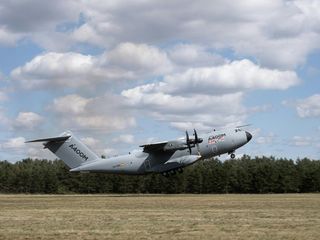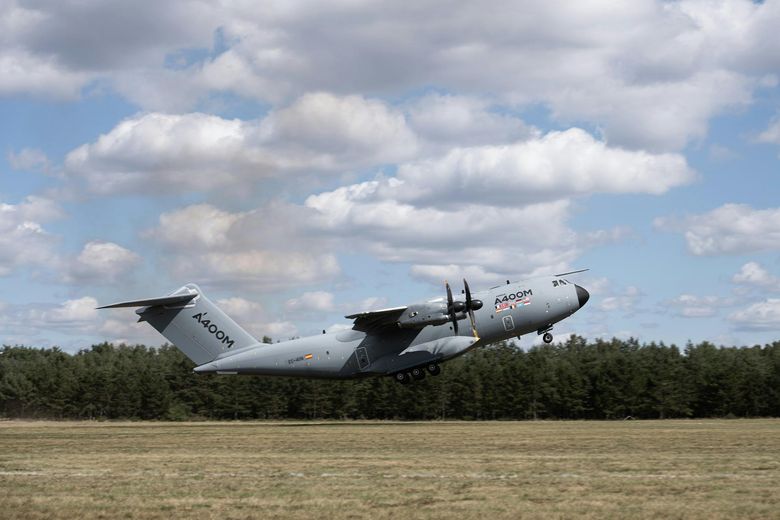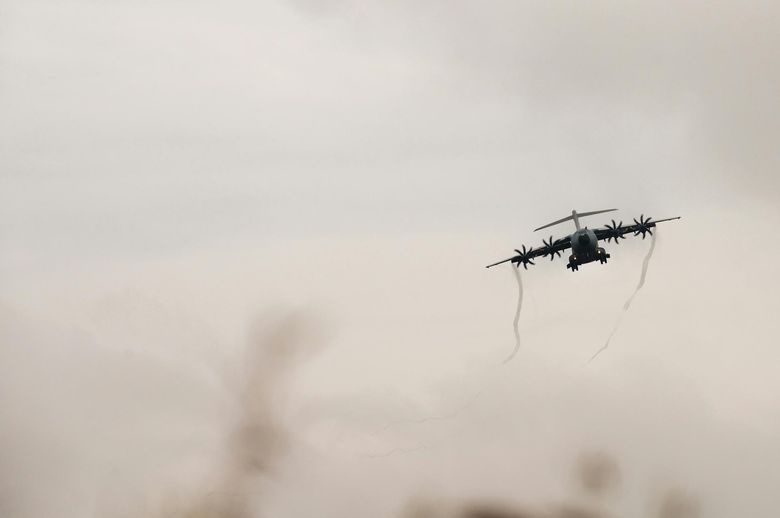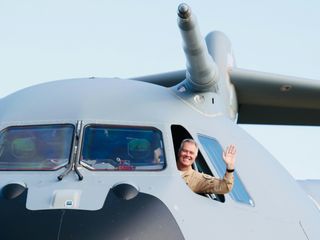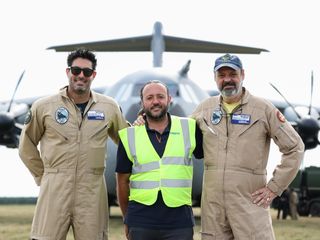"Bumpy, slippery and green." That's how Airbus Defence and Space A400M test pilot Jon Taylor describes the feeling of landing a loaded 123-tonne military transport aircraft on grass. However, even in these unprepared environments, the A400M's performance continues to amaze Taylor. 'This aircraft's manoeuvrability is impressive. It does not defy physics, but sometimes it seems as if it is trying to.”
This latest, pivotal flight test campaign focused on significantly improving the A400M's existing capability to operate from challenging unpaved runways. The aircraft's advanced technology already enables precision landings on short, unprepared strips of less than 800 metres and down to 20 meters wide (as proven by A400M in operation), which is beyond the capability of other heavy airlifters. The enhancement will not only solidify the A400M's proven status in service with ten forces worldwide, but also demonstrate Airbus's commitment to continuously evolving the aircraft.
A game-changer for soft-field operations
The recent flight testing took place in the German town of Altengrabow, in the summer of 2025. It aimed to demonstrate the A400M’s ability to operate under extended weight conditions and on softer, vegetation-covered runways. The testing is part of the wider capability enhancement agreement with OCCAR (Organisation Conjointe de Coopération en matière d'Armement), the organisation that manages the programme on behalf of the launch customer nations.
For Jorge Palau, project Chief Engineer, being able to operate an aircraft as large as the A400M from soft, vegetated runways is a “game changer” for customers. This enhancement will enable users to operate beyond their current capabilities, providing critical flexibility in the face of global challenges:
- Increased payload: Once certified, the expanded capability in these unpaved environments means that the A400M can carry more people, material, or vehicles, requiring fewer rotations. In military contexts, this reduces risk.
- Humanitarian missions: For humanitarian relief and disaster assistance, this enhanced payload capacity on soft-field runways enables the rapid delivery of critical goods and services closer to the point of need. For instance, in January 2025, during the relief operation following the cyclone that hit Mayotte Island in the Indian Ocean, French A400Ms were able to land at the small local airport and deliver aid. Additionally, A400Ms from Turkey and four other armed forces formed the backbone of the humanitarian air corridor established in 2023 following the devastating earthquakes in eastern Turkey and Syria.
- Special Operations (SOF): The ability to use austere air facilities is crucial in addressing current global challenges. The A400M's low-level flight capability often complements its ability to land on unprepared strips, enabling missions that require rapid, discreet entry deep into operational areas. This allows reaching remote locations for personnel extraction and transporting goods, thereby strengthening transport capabilities on unpaved runways.

The French Air and Space Force demonstrated the A400M’s capability to take off and land from short, unprepared runways down to 20 metres wide during a month-long deployment in French Polynesia in 2022.
Precision and collaboration in action
The Altengrabow trials, performed in collaboration with the German Armed Forces (Bundeswehr), required the precise coordination of multiple teams and involved daily testing activities on the unpaved surface.
José Luis Jaraiz, the Campaign Manager from Airbus Defence and Space, explained that thorough airfield characterisation, including measuring bearing strength and making daily spot checks, was crucial for ensuring a safe and efficient operation on the soft, unpaved surface.
For the pilots, landing on a grass strip versus a paved runway presents immediate differences. The process begins with carefully locating the necessary visual markings and aiming points. "As you touch down, the grass is not very smooth, with a certain level of bumpiness you feel you are in a sort of washing machine," said Jon Taylor.
Yet, the A400M's inherent design smooths out the challenge. Its advanced Flight Control System, or fly-by-wire, is what makes the aircraft so special to fly, easing the pilots' workload. "It is literally like flying a PlayStation," Taylor noted, contrasting it with older aircraft he used to fly like the C-130 which lacks this system. Coupled with the raw power of its four engines, the A400M can accomplish missions that other aircraft simply cannot.
Lead Flight Test Engineer César González confirmed that the data collected during the campaign - using an automatic instrumentation system that captures thousands of parameters in real time- will inform and validate the future certification and delivery of this enhanced capability to customers. González also emphasised the A400M's "superpower" as its versatility, enabling it to perform diverse tactical missions like in-flight refuelling, cargo dropping, parachuting and operation on short, unpaved runways.
The future of the A400M
Now that the current campaign is complete, the next steps include additional testing, a certification phase and the delivery of the enhanced capability to the global fleet, without the need for any aircraft modifications.
Looking ahead, the A400M programme continues to evolve. Plans for the future include enhanced connectivity features, increased payload capacity, and the ability to act strategically as a mothership for releasing drones. These ongoing developments ensure that the A400M will remain a highly versatile and capable military transport aircraft for decades to come.
Latest Defence news
Continue Reading

International Training Centre: 15 years training the world's best military crews
Web Story
Defence
The Airbus International Training Centre in Seville is the training centre for military aircraft crews -A400M, A330 MRTT, C295, CN235- and future platforms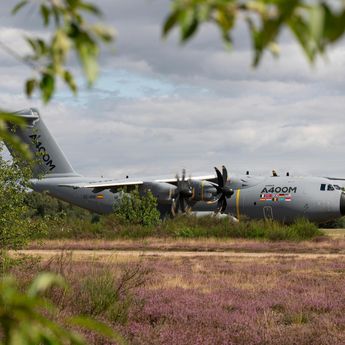
Airbus A400M: Landing where others can't to deliver more aid
Web Story
Defence

Combating information warfare: How Airbus is helping win the fight for the truth
Web Story
Defence
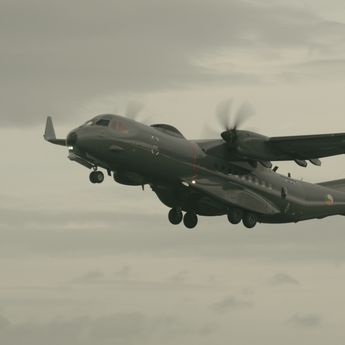
Airbus C295: How Ireland’s eyes in the skies help prevent illegal fishing
Web Story
Defence
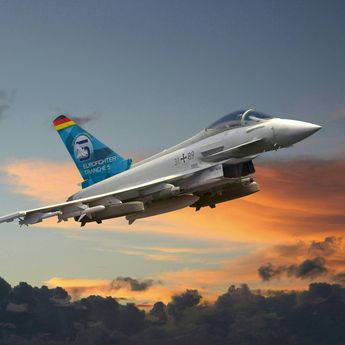
Germany orders 20 new Eurofighters to strengthen air superiority
Press Release
Defence

